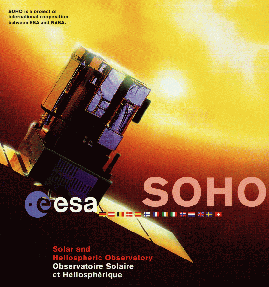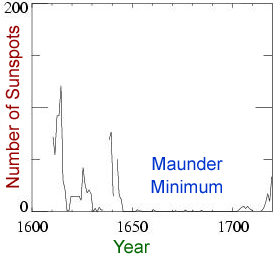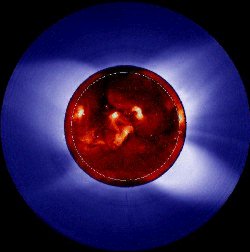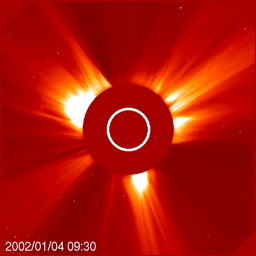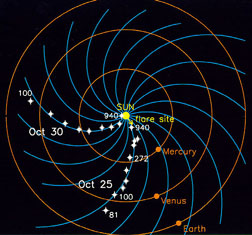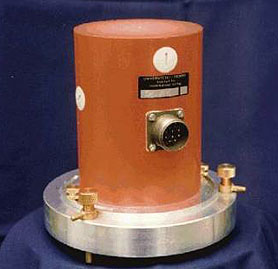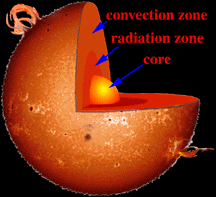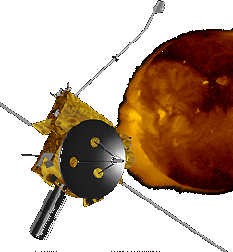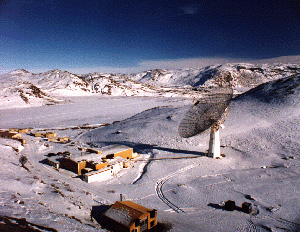
Ground-based Observations of Space Weather
Some observations of space weather phenomena are made by spacecraft. Other observations are made from the ground on or near the surface of Earth. Spacecraft have certain advantages, such as being able to observe features from different perspectives or being able to view objects in electromagnetic wavelengths (such as X-rays) that don't penetrate Earth's atmosphere. Ground based observations have advantages as well; some records (such as sunspot counts) have been collected for periods extending back in time far beyond the beginning of the space age, and ground based instruments are generally far cheaper to install and maintain than their satellite-borne counterparts.
Observing the Sun from Earth
Telescopes and other optical instruments have been used for solar observations for centuries. We have records of sunspot counts and the appearance of the solar corona during eclipses that extend far back in time. Spectroscopes help us analyze the spectral composition of sunlight, while coronagraphs provide us with views of the Sun's atmosphere between rare solar eclipses. High altitude observatories peer into the near infrared portion of the Sun's radiation.
Aurora - Southern and Northern Lights
Collisions of magnetospheric ions and electrons with atmospheric gases at high latitudes produce spectacular light shows that we know as the aurora (or Southern & Northern Lights). Auroral observations, which also extend far back in time, provide us with evidence related to the frequency and strength of space weather storms.
Monitoring the Ionosphere with Radio Waves
Electrically charged layers of Earth's atmosphere, collectively called the ionosphere, are strongly influenced by changes in space weather. Radio frequency electromagnetic waves, which are reflected or absorbed by ionospheric layers, are used in various ways to probe the ionosphere. We bounce radar signals off the ionosphere's layers, "listening" for telltale echoes; we also use radio antenna arrays called riometers to sense the extent to which the ionosphere absorbs incident natural radio noise from deep space.
Measuring Magnetic Fields around the Globe
The constantly changing Interplanetary Magnetic Field's (IMF) interplay with Earth's magnetic field causes continuous changes in the local magnetic field strengths measured on Earth's surface. A global network of magnetometers monitors the constant shifts in the components of the resultant magnetic field, allowing us to infer the state of the IMF.





